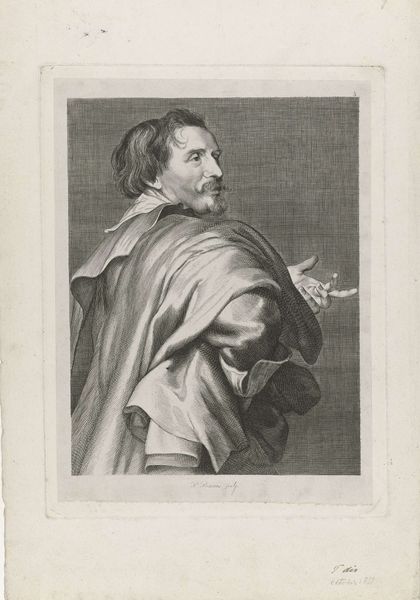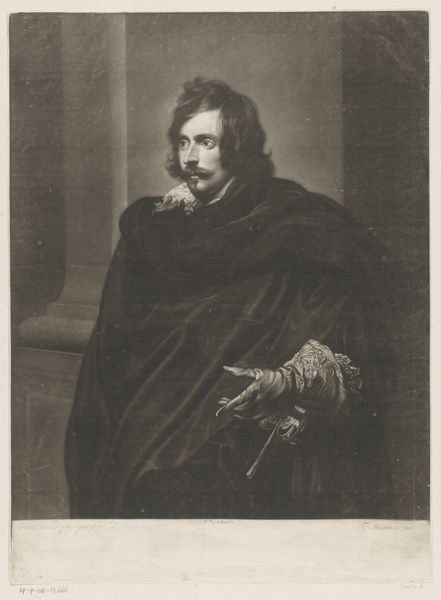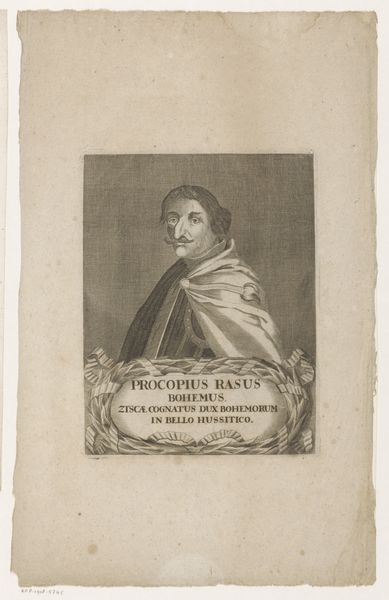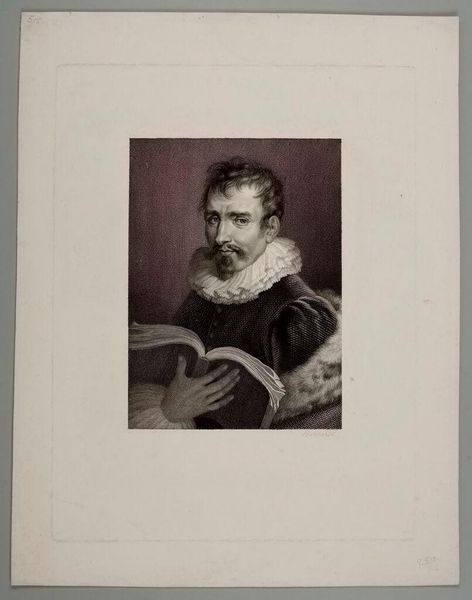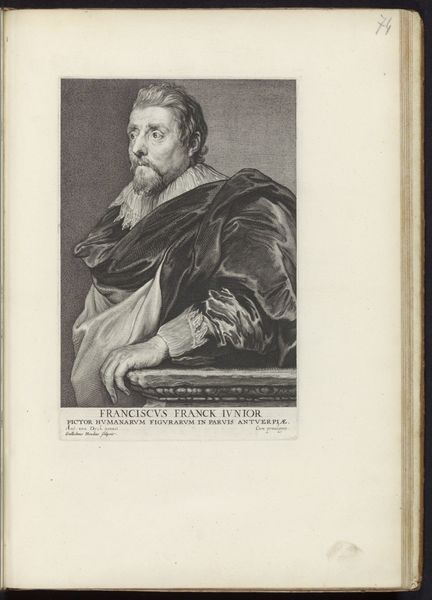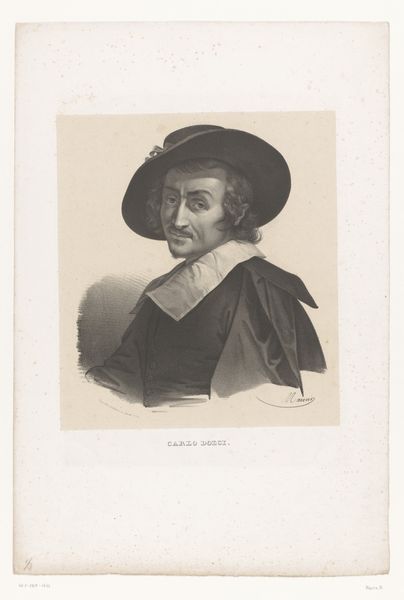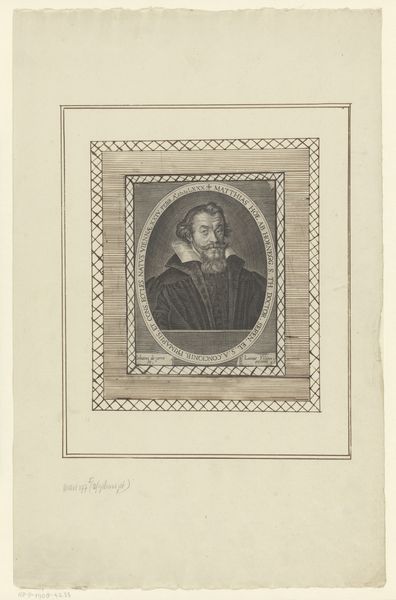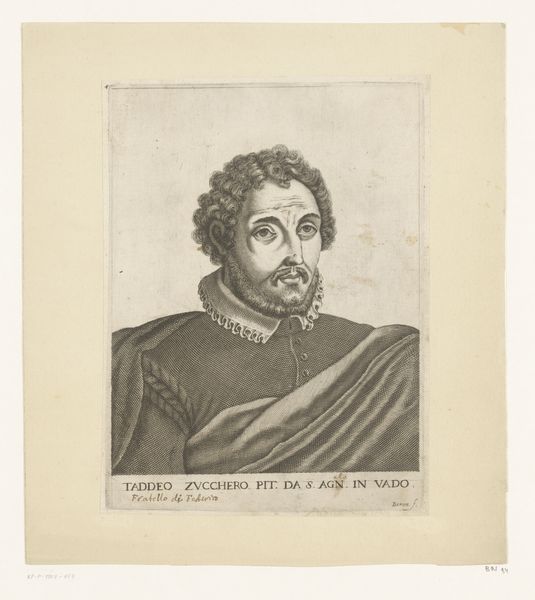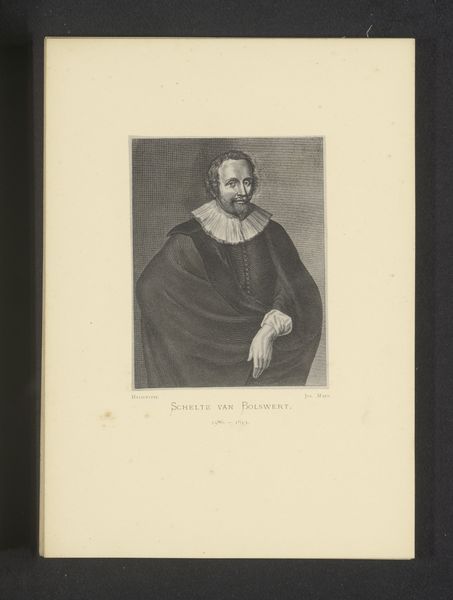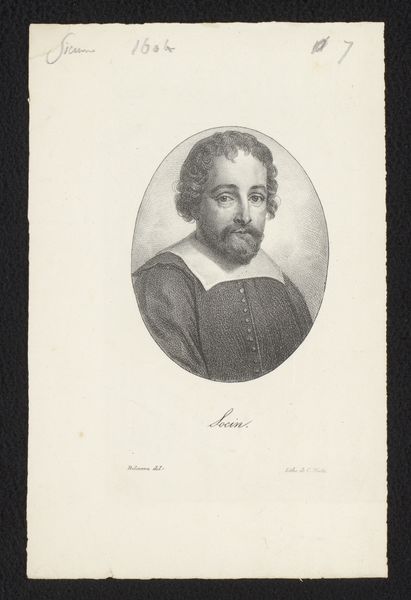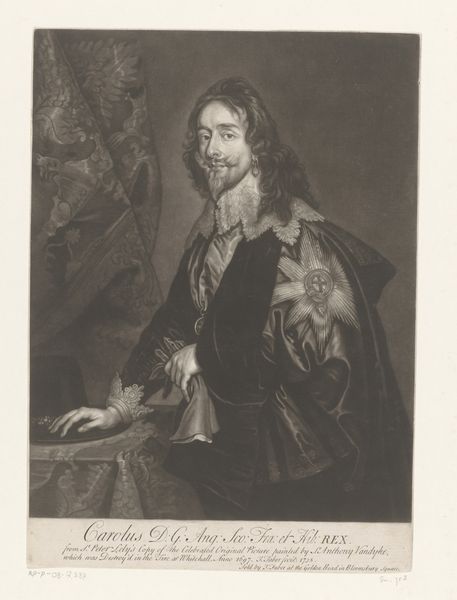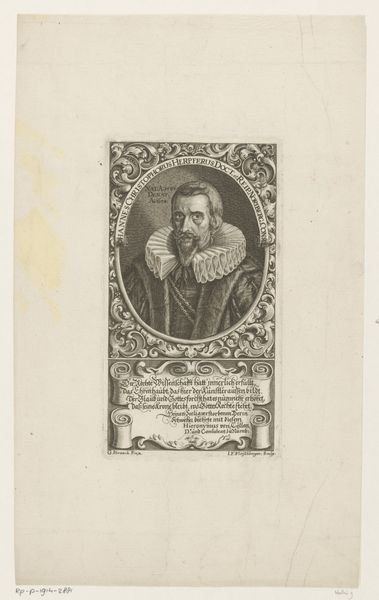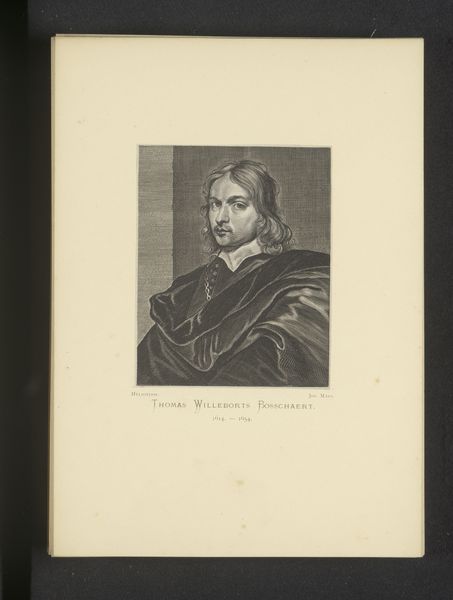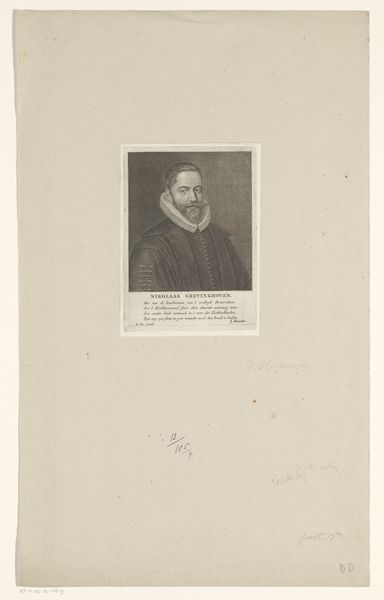
Dimensions: height 359 mm, width 272 mm
Copyright: Rijks Museum: Open Domain
Curator: My first impression? He looks melancholy, like a Byronic hero lost in thought. Editor: Exactly! Let’s delve into this image. This is "Spaanse edelman in historische kleding," or "Spanish nobleman in historical clothing," created in 1863 by Eugène Louis Pirodon. It's an etching, so a print. I find these lines so elegant! Curator: There is an undeniable romance to it all, isn’t there? He's holding what looks like a staff, lost in the shadows… almost like a theatrical performance. Makes me wonder what the scene or story is behind his solemn pose? Editor: Well, historical painting in the 19th century – Academic art, and the style often labeled Romanticism - certainly idealized figures. This gentleman embodies certain noble traits, almost lifted from memory rather than true representation. Do you think that he stands for a specific idea? Curator: Absolutely! Those darks swirling around the light illuminating his face? Definitely feels allegorical. He seems like an echo of a past era, some golden age, or even lost innocence. The past never truly disappears... Editor: That echoes the fascination with historical symbolism that ran rampant at the time, even when referencing ideas more than accurate historic costume. His clothes – or what they symbolize -- carry almost more significance than him as an individual, wouldn't you agree? Curator: Hmmm, perhaps it’s a bit of both. I mean, he does have piercing eyes and the way he clasps the cane feels quite confident... there's still a trace of personality behind the "noble" garb and pose, however romanticized it all is. He doesn’t appear simply a prop in some narrative; the portrait invites me to see him beyond his surface-level traits. Editor: Good point! This image offers a fascinating glimpse into the psychology of that time, using imagery from other eras. The man represents more than one man, which invites all sorts of interpretations based on anyone who might meet those historical symbols. I almost feel I know a little bit more after that perspective! Curator: It really is. Now that you mention it, seeing the "Nobleman," I almost recognize something I missed just moments ago... Thanks, Editor!
Comments
No comments
Be the first to comment and join the conversation on the ultimate creative platform.
